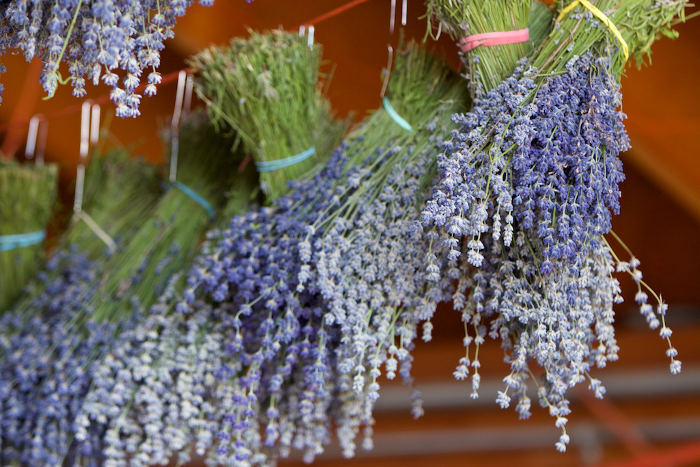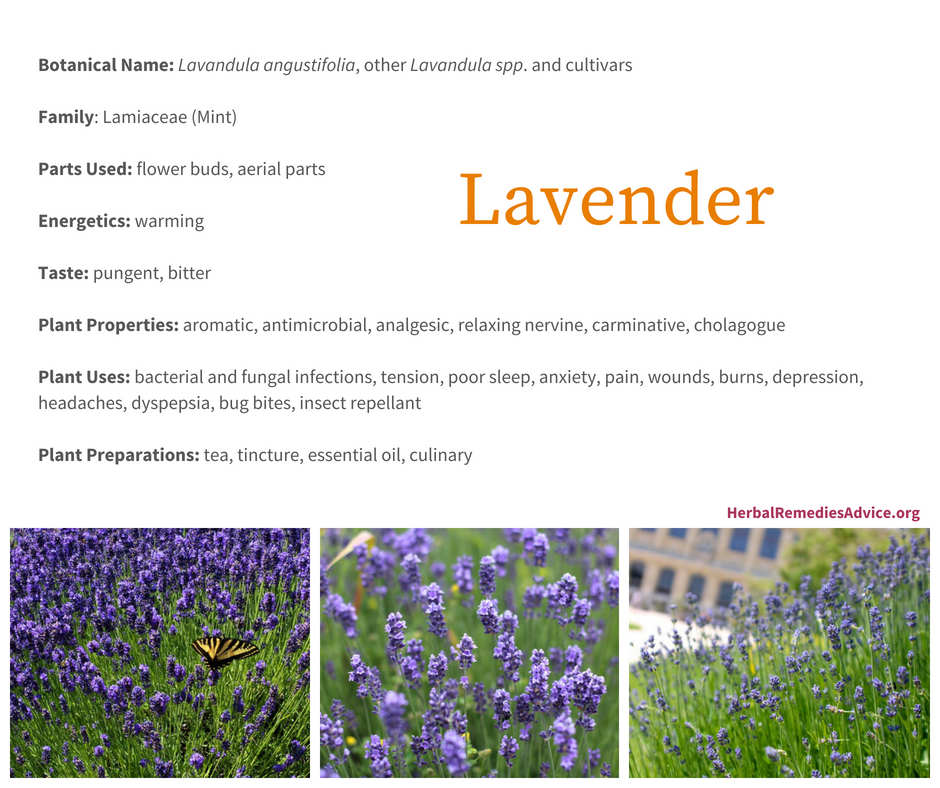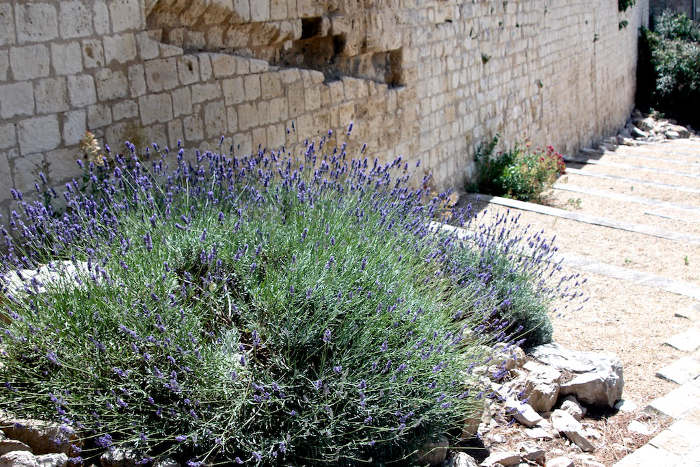Get weekly tips, recipes, and my Herbal Jumpstart e-course! Sign up for free today.
Benefits of Lavender Herb
Share this! |
|
There are so many benefits of lavender! It’s frustrating to me that this herb gets shrugged off as a scent in cleaning supplies or only used as an essential oil. The reality is, the whole plant makes powerful medicine and delicious treats. In the following video I’m sharing many lavender benefits plus showing you how easy it is to make lavender honey.
-- TIMESTAMPS --
- 00:00 - Introduction to lavender (Lavandula angustifolia)
- 02:36 - Lavender relieves stress, lifts moods, & promotes sleep
- 05:45 - Lavender heals wounds and helps to fight infections
- 06:34 - Lavender decreases pain
- 07:19 - Lavender promotes healthy digestion
- 07:47 - How to identify, grow, and harvest lavender
- 09:30 - Special considerations for lavender
- 10:07 - Some ways to work with lavender
- 11:17 - How to make lavender honey
- 13:27 - Lavender Fun Fact
Download Your Recipe Card
l

Transcript of the Benefits of Lavender Video
Lavender herb’s delightful scent and beautiful bloom spikes have made it a favorite herb for centuries. Wild lavender grows throughout the Mediterranean and northeast Africa, while garden varieties are found all over the world. Lavender is cherished for its scent, being widely used in perfumes, beauty products, disinfectants, and household cleaners. Herbalists and aromatherapists rely on it for everything from relieving stress and promoting sleep to healing wounds and encouraging healthy digestion.
If you step in to any large plant nursery you’ll soon find there is a dizzying number of different types of lavender out there. Some have been bred for large flowers, while others are hardier for surviving harsher winters. In the aromatherapy world, the different types of lavender are prized for their variations in chemical content. Just dipping your toe into the world of lavenders will show you how complex this common herb can be.
The best way to get to know lavender herb is to enjoy it often. When walking by lavender plants, rub your hands along the leaves, stems, and flowers, and then cup your hands to your nose and mouth and breathe deeply. Pay special attention to the plants that are potently aromatic. If you do this over time you’ll get a sense of the many nuances of lavender. Lavender, like most herbs, thrives with neglect. A coddled plant that is watered regularly won’t be nearly as strong as a plant striving to survive in harsher conditions.
Lavender Herb to Relieve Stress, Lift Moods, and Promote Sleep
Lavender’s lovely scent is a balm to a stressed-out mind. Simply smelling the lavender plant or lavender essential oil soothes anxiety and decreases stress.
Herbalists have long recommended lavender sachets and pillows as a bedtime aid to promote deeper sleep. Some interesting studies have confirmed this use.
One study looked at how “sleep hygiene” (improved habits) combined with lavender essential oil could help college students who reported having sleep issues. Seventy-nine students were split into two groups. Both groups were given guidelines to improve their sleep hygiene, including maintaining a regular sleep schedule, avoiding fluid intake before bedtime, avoiding caffeine and alcohol late in the day, creating a good sleeping environment (e.g., darkness, avoiding screens/texting), having a relaxing bedtime routine, and exercising regularly. One group was given a lavender essential oil patch to place on their chest at night. The other group was given an identical patch without lavender essential oil. While both groups showed improvements in sleep quality, those using the lavender patches had significant improvements over those solely using sleep hygiene practices.1
Another study showed that smelling lavender helped to improve the sleep of women who had recently given birth.2 Lavender can go beyond helping women to get their necessary ZZZZs: a small pilot study has shown that it can also improve post-partum anxiety and depression for high risk women.3
Lavender’s ability to soothe nerves and relieve stress can be a gift in countless situations. Herbalist Thomas Easley and I were recently going through a very stressful time together. One of our daily practices was what we called “our garden ritual,” which involved breathing in the sweet aromas of a huge lavender plant in a garden near our rooms.
Numerous clinical studies have looked at lavender’s ability to relieve stress and anxiety in many different ways. Several studies have shown that breathing lavender prior to surgery or a dental appointment can be positively relaxing.4,5,6 It has also been shown to relieve the agitation that often accompanies dementia.7 Lavender essential oil in nursing homes has been shown to decrease falls in elderly people.8
Silexan, a patented German lavender product, has been shown to be as effective as lorazepam (Ativan) for helping adults diagnosed with generalized anxiety disorder.9
Herbalist David Winston uses lavender for people who feel they are in a fog and for those experiencing stagnant depression, which he defines as a fixation on a specific traumatic event. For these purposes, he recommends using it internally as a tea or a tincture, and he likes to combine it with lemon balm.
Lavender Herb to Heal Wounds and Combat Infections
Lavender herb has many actions that make it a wonderful herb to consider for wounds, infections, and bug bites. It can promote the healing of wounds and is antiseptic and antimicrobial, helping to address infection while also decreasing pain.
It’s been shown to relieve excessive inflammation and relieve pain after an episiotomy.10,11
One clinical study showed that a formula containing lavender, clove (Syzygium aromaticum), and Herb Robert (Geranium robertianum), can be effective for relieving ear infections.12 I surmise that it works by decreasing pain and fighting infection.
Lavender herb is antimicrobial. It’s been shown to be effective against vaginal Candida yeast overgrowth.13 An in vitro study showed it to be effective against several parasites, including Giardia duodenalis, Trichomonas vaginalis, and Hexamita inflata.14
Lavender essential oil is widely used on minor burns to decrease pain and promote tissue healing. I like to use it on bug bites to relieve the itching and inflammation.
Lavender Herb to Decrease Pain
Whether it’s the severe pain of kidney stones or labor, a sharp post-surgical pain, or the pain of uterine cramps, lavender has been shown to be a powerful ally in decreasing our discomfort.15,16,17,18
Many studies have shown lavender to have a powerful effect on reducing our sense of pain and it could be a helpful adjunct therapy to stronger pain medications. Here’s a great example of this. One study showed that children who had had their tonsils removed took less acetaminophen (Tylenol) when inhaling lavender essential oil as part of their post-surgical practice.19
Two studies have shown that lavender essential oil can be helpful for women who experience pain with menstruation (dysmenorrhea). One study showed that inhaling lavender essential oil was effective, while another used it as an abdominal massage oil to good effect.20, 21
Lavender Herb for Healthy Digestion
While not often thought of for digestion, lavender herb proves to be a wonderful culinary and medicinal herb to promote digestion. It’s slightly warming and aromatic, making it a lovely carminative herb. It can be enjoyed in food, as a tea, or even added to bitters blends.
Uses of Lavender Herb
Lavender herb can be used internally in food, as a tea, and as alcohol extract (tincture). I like to infuse the fresh lavender flowers and leaves in water for a couple hours for a light-tasting floral water.
The plant can be infused into oil for use as a lotion or salve.
Lavender essential oil is commonly added to all-purpose salves. Lavender essential oil is used both externally and internally (with caution).
When cooking with lavender or as a tea, it is best used in small amounts. Too much lavender gives an unpleasant, bitter taste to the food.
The therapeutic doses for lavender are:
- As tea: 1 to 3 grams per day
- As tincture (dried flowers): 1:5, 70% alcohol dosed at 1.5-2 mL (1/3 to ½ teaspoon), 3 to 4 times per day
- As essential oil: inhaled or diluted in a carrier oil for external use
Lavender Herb Special Considerations
Lavender essential oil is best used externally when diluted with a carrier oil.
Lavender from florist shops may have been sprayed or grown with harmful chemicals.
There have been some unsubstantiated reports that lavender-scented products have adversely affected young boys due to estrogenic effects. These isolated cases have been questioned. Currently, the Botanical Safety Handbook gives lavender its highest safety rating.
The Lavender Plant
There are 47 species in the Lavandula genus. Lavandula angustifolia is the most well-known and used in herbal medicine. There are many different cultivars of this species as well.
Lavandula angustifolia originally hails from the rocky dry soils of the Mediterranean. It prefers to grow in well-drained soils and thrives in wet winters and dry summers. Hot humid summers are the most difficult climate for cultivation of lavender.
It grows as a small shrub growing to about 3-4 feet (1 meter) in height.
The narrow evergreen leaves are strongly aromatic.
The flowers range from pink to blue to purple and they grow as spikes on the end of leafless stems.
When harvesting lavender for medicine it is best to cut the plant after the flower buds have formed, but before they have fully bloomed. As an ornamental plant, lavender prefers to be cut back to a round mound every year otherwise it can become overly woody.
Citations for Lavender Herb
Click to show/hide.
Rosalee is an herbalist and author of the bestselling book Alchemy of Herbs: Transform Everyday Ingredients Into Foods & Remedies That Healand co-author of the bestselling book Wild Remedies: How to Forage Healing Foods and Craft Your Own Herbal Medicine. She's a registered herbalist with the American Herbalist Guild and has taught thousands of students through her online courses. Read about how Rosalee went from having a terminal illness to being a bestselling author in her full story here.




